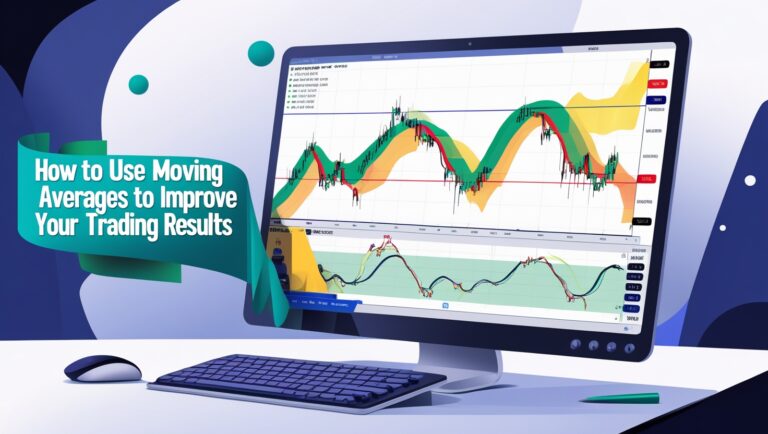What Stocks Are Moving Today? (And How to Spot Them Early)
What Stocks Are Moving Today? (And How to Spot Them Early)
One of the most common questions I get is: “How do you know what stocks are moving today before the market opens?” I get it — when you’re trading to grow your account or even pay bills like I do, timing matters. You don’t want to wait around for alerts. You want to know how to spot hot stocks before everyone else does.
In this post, I’m going to show you exactly how I find stocks that are moving — not just after the open, but before 9:30AM. This is part of my daily routine, and if you want to dive even deeper into my full strategy, I explain it step-by-step inside my ebook right here.

Table of Contents
Where I Start Every Morning
Before I even open my charts, I go straight to pre-market scanners. These are free tools that show which stocks are gapping up, which ones have breaking news, and which tickers are seeing unusual volume.
The goal is to find stocks that already have momentum building before the market opens. I use these filters:
- Volume over 100k
- Price under $20 (for small/mid-cap moves)
- % Change over 5%
- Recent catalyst or headline
This alone helps me quickly narrow down the list from thousands of tickers to a handful of real opportunities.
I Check the News (But Not Like Everyone Else)
I don’t scroll through financial sites for hours. I use a couple of free news scanners that show headlines tied directly to the stocks on my list. If a company has earnings, FDA news, merger rumors, or upgrades, that’s a green flag for me to dig deeper.
Most big moves start with a catalyst + early volume. I don’t trade based on the news itself — I trade based on how the market reacts to the news. That’s an important difference. I explain how to read that reaction inside my ebook.
Watching Pre-Market Price Action
The chart will always tell you the truth — and I trust it more than any headline.
Once I have my short list of stocks that are moving in pre-market, I pull up their charts. I look at:
- Pre-market highs and lows
- Key resistance and support levels
- Volume patterns between 7AM and 9:15AM
If a stock is holding its pre-market levels and volume is increasing steadily, that’s usually a strong sign it could run after the open.
Building My Watchlist of 6 Stocks
After scanning everything, I choose no more than 6 stocks to put on my watchlist. That’s my rule. More than 6 and I get distracted — and when you’re distracted, you miss setups.
These 6 stocks are the ones with the cleanest pre-market action, the strongest catalysts, and the best potential to move fast. I review this part in detail in my ebook, because it’s the core of my daily trading plan.
I Let the Open Confirm Everything
Even if something looks great in pre-market, I don’t jump in blindly at 9:30AM. I give it 5–15 minutes to confirm. I want to see real buying pressure. If a stock breaks pre-market highs with volume, that’s often where I enter.
But if it fades fast and volume dries up, I move on. No guessing. I let the market tell me what’s real and what’s fake.
Using Volume and Price Action to Confirm the Move
I don’t use indicators. I watch how the stock reacts to levels. If it pushes, pulls back, and then holds support — that’s strength. If it fakes out and drops under pre-market lows — I’m out.
Volume is my best friend here. Big breakouts come with volume. If volume doesn’t show up, the move is weak. That’s why I always wait to see volume + price confirmation before I commit to the trade.
Avoiding False Movers
Not every gapping stock is worth trading. Some move in pre-market, then die at the open. I’ve been burned by this before. Now, I check the float, news legitimacy, and volume trends before trusting anything.
If it’s a low-float pump with no real catalyst, I usually skip it. I’d rather trade clean setups than gamble on junk.
How This Helps Me Pay Bills With Stocks
This routine — spotting stocks before the open, waiting for confirmation, and sticking to a clean watchlist — is what helps me trade with confidence. I’m not throwing darts. I’m building a system that works.
And yes — I literally use it to pay my bills. That’s why I wrote my ebook, to show exactly how I do it. No fluff, just a simple, working process that others can follow too.
My Favorite Free Tools
I use a mix of free websites and scanners every day. Inside my ebook, I list the exact platforms I use, including how I set them up to filter stocks that are moving with volume.
I believe every trader should have access to the tools that work — without spending a fortune. And most of the best ones are free if you know where to look.
Final Thoughts
If you want to stop chasing random alerts and start finding what stocks are moving today on your own, you need a morning routine. This process changed my trading completely — and gave me real structure.
No more noise. No more guessing. Just a plan that works.
If you’re ready to learn it in full, grab my ebook “Pay Bills With Stocks” and start building your own watchlist with confidence.
One mistake I used to make was relying on stock picks from social media. I’d see someone mention a ticker that was “about to move,” and I’d jump in without checking the chart or volume. Most of the time, I was left holding the bag. That’s when I realized I needed to find my own stocks that are moving, based on real momentum and setups I understand.
The earlier you scan, the more ahead you’ll be. I usually start checking scanners around 7:30AM EST. That’s when volume begins picking up and news starts flowing. I don’t just look at the biggest gainers — I dig into why they’re moving and whether they’re still holding key levels. A stock that’s up 30% but fading fast is not something I want to touch.
I also avoid stocks with unusual price spikes but no volume. These are often traps. Just because a stock is up pre-market doesn’t mean it will hold. That’s why I always check the volume compared to the float. If volume is weak and the float is high, the move probably won’t last long. These small checks can save you from unnecessary losses.
Many of the best trades I’ve taken came from stocks that weren’t trending on Twitter or Reddit — they were just quietly building volume and setting up clean technical levels. That’s the type of setup I love. No hype, just movement based on real interest from buyers stepping in. These are the stocks I include in my 6-pick morning list, and I teach this process fully in my ebook.
Understanding market sentiment also helps me decide which stocks to focus on. If the overall market is bullish, I focus on breakout setups. If we’re in a choppy or red market, I tighten my entries or avoid certain plays altogether. The best traders I know don’t just look at individual tickers — they read the entire market environment.
I also watch for press releases that drop during pre-market. Earnings, partnerships, FDA approvals — these types of catalysts tend to bring in early volume and excitement. But I always look deeper. Is the news real and relevant? Is there substance, or is it just a fluff PR to pump the stock? I’ve seen both — and experience helps me tell the difference.
Another habit that helped me was screenshotting my top movers every day. I save the chart, note the news, track how it moved, and review it at the end of the week. This helped me build a personal pattern recognition system. Now, when I see a familiar setup forming in pre-market, I trust it — because I’ve seen it work before. That confidence makes execution easier.
I keep my chart layouts clean. No indicators, no clutter. Just price action and volume. I mark pre-market highs and lows, watch the first 10–15 minutes of the open, and then wait for confirmation. This has become my rhythm — and it’s the same rhythm that helped me build consistency and use trading to support myself monthly.
Sometimes, a stock may be moving well in pre-market but has low float and unpredictable spreads. I’m very selective with these. They can move fast — but they can also trap you fast. If I see erratic wicks, inconsistent volume, or gaps with no support, I stay away. I’d rather trade clean setups with structure than try to “win big” on a random runner.
If you’ve ever felt overwhelmed by trying to find hot stocks before the market opens, trust me, I’ve been there. It’s easy to feel lost in the noise. But with a step-by-step morning routine and a clear watchlist process, it becomes manageable. That’s exactly why I put all of this into Pay Bills With Stocks. I wanted to hand others the routine I built through trial and error.
You don’t need 15 trades a day. I usually only take 1 or 2 trades from my watchlist — and some days, none at all. But because the setups are strong and the entries are planned, my win rate is higher, and my risk is smaller. This is why building a reliable list of stocks that are actually moving today is more important than chasing hype.
The truth is, most people don’t fail because they’re lazy — they fail because they don’t have a plan. If you want to learn how to spot stocks early, build a watchlist, trade clean setups, and use those profits to build something real — it all starts with structure. You can get mine inside my ebook, and start applying it as early as tomorrow morning.

Stay ahead in the stock market! Subscribe to our newsletter and receive exclusive stock flow reports, trading insights, and actionable tips directly in your inbox. Join thousands of traders who get our updates first.







